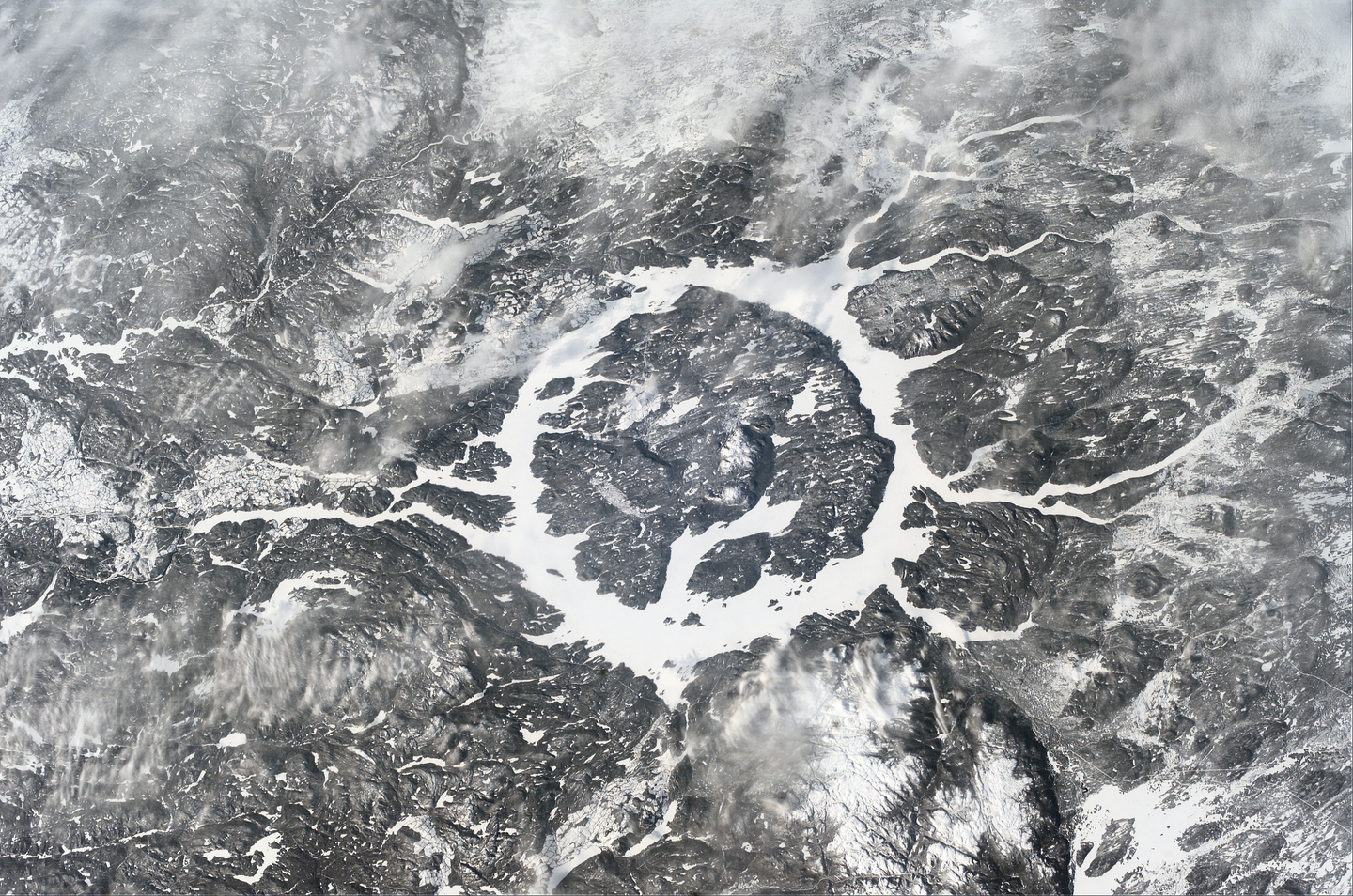Did An Asteroid Help The Dinosaurs?
Their global domination may have been boosted by a massive asteroid impact

Around 215 million years ago, an asteroid about two to five miles across scorched through earth’s atmosphere and slammed into the northern region of the supercontinent Pangaea, scientists believe.
The pleasingly circular crater left behind now sits in the sparsely populated Manicouagan Region of Quebec, Canada, and is the largest clearly visible crater on earth — roughly ten times the size of New York City.
Scientists have long puzzled over possible impacts that the so-called “Manicouagan event” had on life. At one point, it was thought that it may have caused the Jurassic-Triassic extinction, the one that led to the global dominance of dinosaurs.
But it turned out that the Manicouagan event took place about 12 million years too early, leaving scientists scratching their chins. Now a study published in the journal Scientific Reports suggests that the Manicouagan impact may have created a mass extinction of its own and may have contributed to the Jurassic-Triassic extinction and the resulting dino-domination, after all.

Available data suggest that three types of sea critters (microscopic radiolarians, eel-like conodonts, and mollusks called ammonoids) went through three big extinction phases leading up to the Jurassic-Triassic. The later die-offs have been connected to ocean anoxia and volcanic eruptions. But the first — which appears to be massive and global in scale — remained a mystery.
In an attempt to solve it, a team of Japanese researchers looked at fossils embedded in a claystone seafloor area of the former super ocean, the Panthalassa, which once surrounded Pangaea. They found that right around the time of the Manicouagan impact, many species of tiny radiolarians vanished. The resulting collapse of the ocean ecosystem, the researchers hypothesize, may have caused the mass extinction of the conodonts and ammonoids.
The Jurassic-Triassic extinction wiped out 34 percent of marine species, and on land, many reptiles, amphibians, and other creatures vanished. Dinosaurs took advantage of the ecological vacancies, rising to prominence during the Jurassic.
According to the scientists, the study shows that asteroid impacts like the Manicouagan event can have profound effects on oceanic ecosystems. And as for the asteroid/dinosaur relationship, perhaps it can be summed up by the classic parental threat: “I brought you into this world, and I can take you out.”